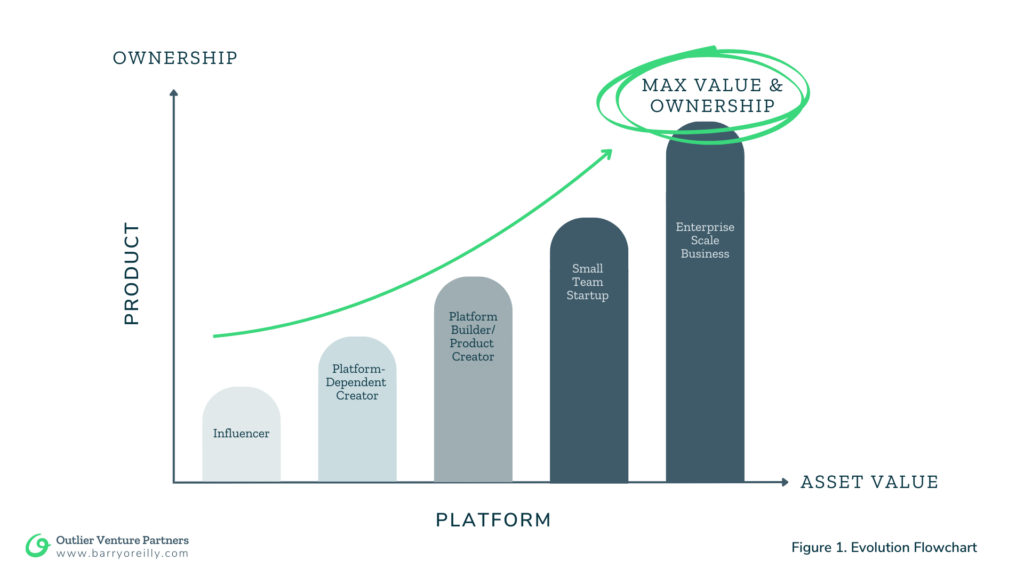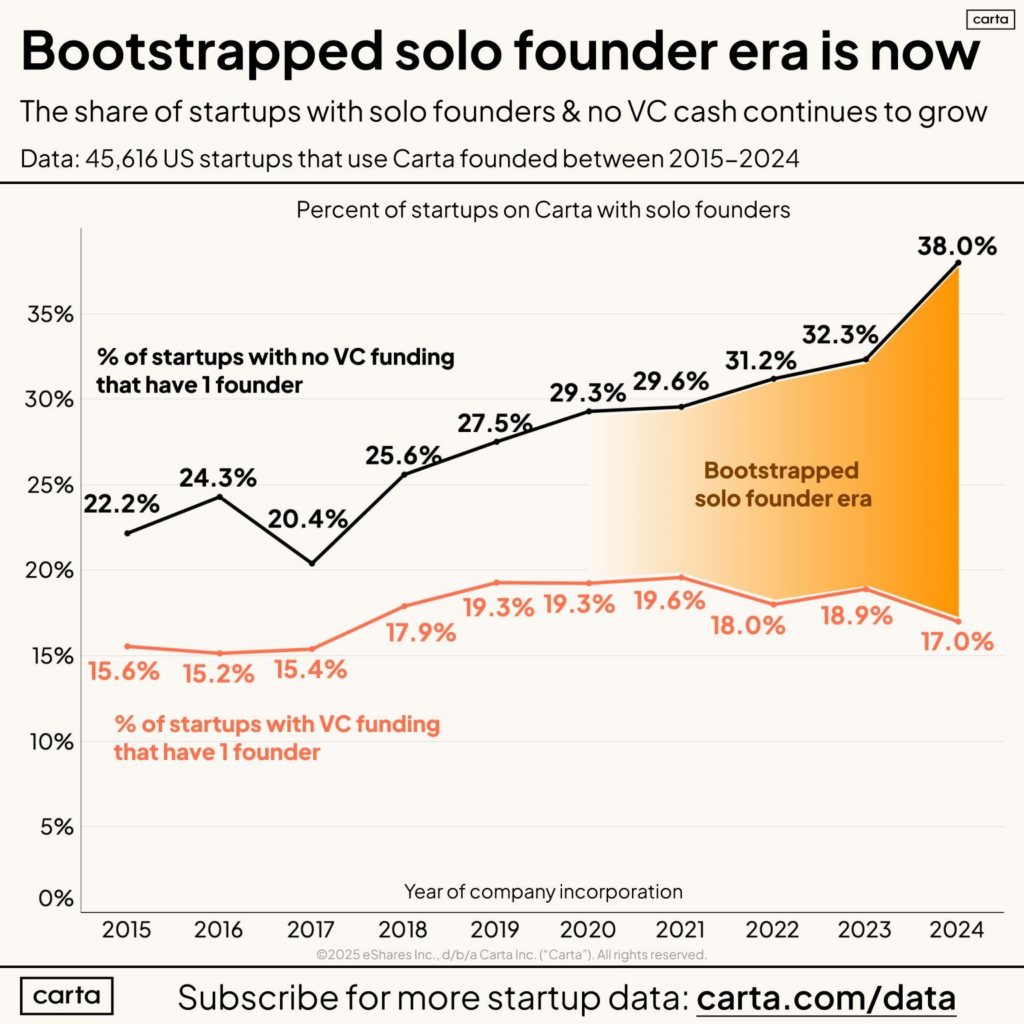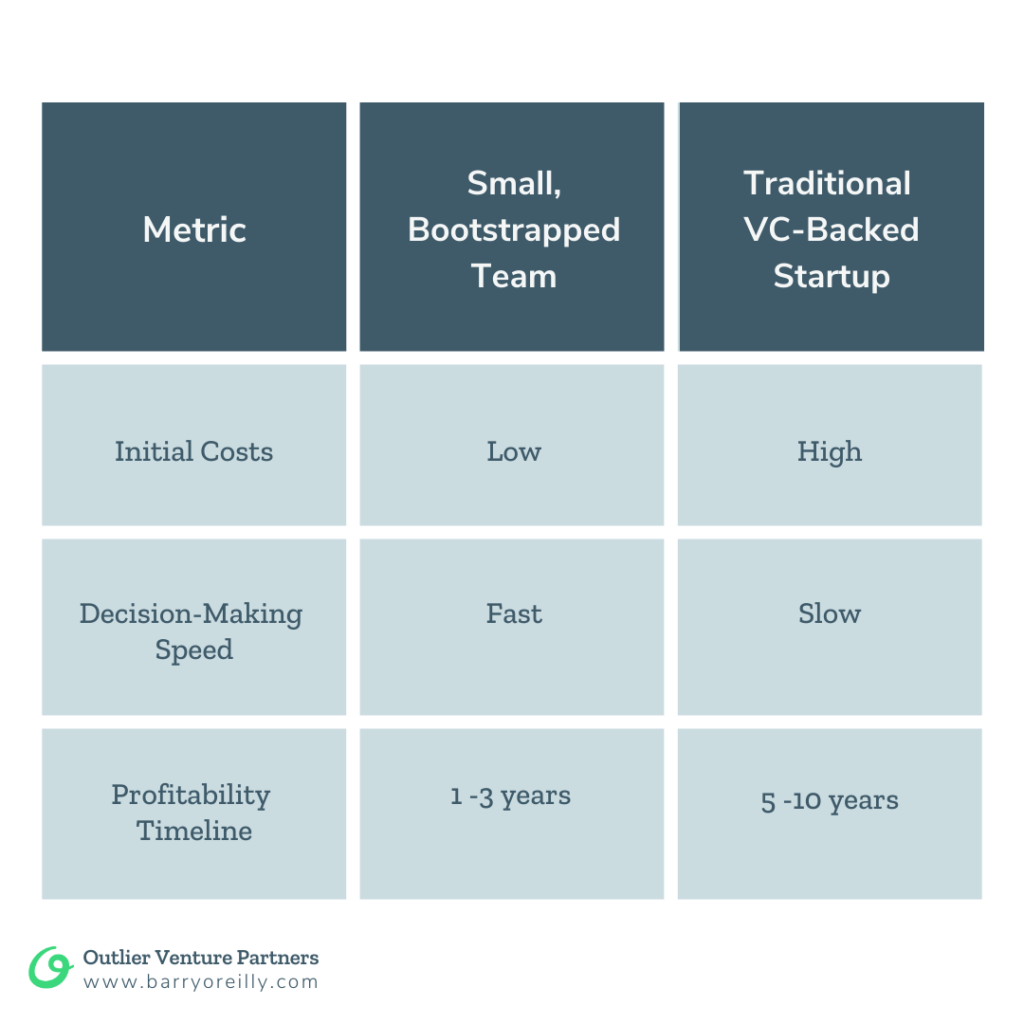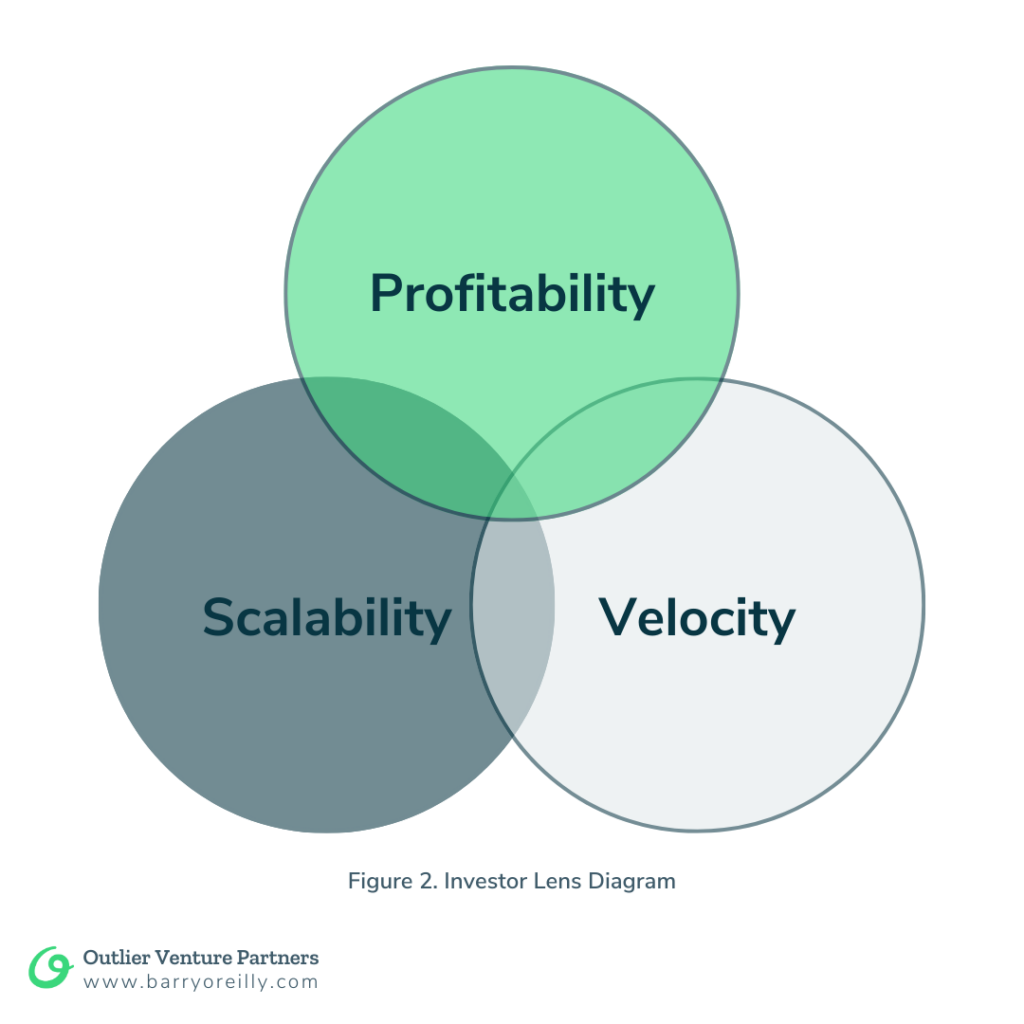In the world of entrepreneurship, a quiet but powerful revolution is taking shape. No longer is startup success solely tied to massive venture capital funding, sprawling teams, and building their own infinitely scalable software systems.
Instead, the era of the bootstrapped solo founder and small team has arrived, offering a lean, agile, and impactful model for building businesses.
For aspiring entrepreneurs and investors alike, this shift opens up new opportunities—and challenges old assumptions.
The ability to be both time-and-capital efficient, test hundreds of niche ideas at a velocity and scale never seen before is upon us—this is the bootstrap revolution: how small teams are redefining entrepreneurship.
The Evolution: From Influencers to Asset-Building Entrepreneurs
What may have started with influencers monetizing platforms has evolved into a new breed of entrepreneurs building long-term assets and scalable businesses.
From MrBeast transitioning from YouTube to building a $100 million revenue business with Beast Burger, to Gwyneth Paltrow’s wellness and lifestyle brand, Goop—valued at $250 million with millions visiting its eCommerce site and watching The Goop Lab on Netflix—these trends aren’t limited to celebrities.
Kayla Itsines, once a little-known fitness coach, sold her business for $400 million. Codie Sanzhez is empowering people to think critically and generate unconventional cash flow through “boring” businesses. Neil Patel started by helping people understand SEO and now sells tools and products to improve websites.
Today, we see more creatives and creators transitioning into platform builders and small-team founders who own not just their content but also the infrastructure that powers it.

Influencer → Platform-Dependent Creator → Platform Builder/Product Creator → Small Team Startup → Enterprise Scale Business
For example:
- Influencer: A fitness coach sharing workouts on Instagram.
- Platform Builder: The same coach launching a subscription-based fitness course.
- Small Team Startup: Building their own app with a lean team of developers and marketers like Melissa Wood Health.
Owning the platform not only provides independence but also ensures long-term value creation.
As someone who has worked closely with founders navigating these transitions, I’ve witnessed how empowering this shift can be for entrepreneurs and their communities.
Take for example Dr Gina Poe, a neuroscientist and sleep researcher renowned for her work on understanding the relationship between sleep and brain function, particularly learning, memory, and emotional health. She is a professor at the University of California, Los Angeles (UCLA), where she conducts research in neuroscience and psychology.
Dr Poe has held numerous academic and research positions, and been one of the most popular guests on the Huberman Lab Podcast which contributes to her reputation as a leader in sleep science. Her findings have significantly influenced how we understand the role of sleep in mental and cognitive health.
Sleep Glide is a product being developed by Nobody Studios in collaboration with Dr Poe and her research, aimed at enhancing sleep quality through innovative solutions. It is designed to help individuals achieve restorative sleep by addressing key factors that disrupt sleep patterns. Creating a company with a small team of experts and Dr Poe’s science instantly catapults the seed of an idea to a scalable startup.
Why Small Teams Are Winning
The concept of small, agile teams isn’t new. In fact, one of the most well-known examples comes from Amazon’s “two-pizza team” philosophy, introduced by Jeff Bezos. The idea is simple: if a team can’t be fed with two pizzas, it’s too large. Small teams are more effective because they can make decisions quickly, adapt to change, and maintain clear communication.
What we’re witnessing within Nobody Studios and the entrepreneurial landscape, however, is an even more radical evolution—what you might call the “two-slices-of-pizza teams.”
These are ultra-lean groups, sometimes as small as two or four people, fueled by advances in technology, tools, and platforms that are achieving outsized success.
Additionally, these small teams are thriving without relying on significant investments or venture capital. In fact, 38% of startups in the U.S. operate without VC funding and it’s only increasing while the number of single founder startups is going down (Peter Walker at Carta, 2024).

Moreover, the cultural shift toward remote work has leveled the playing field. Small teams no longer need to compete with tech giants for office space or high-cost resources. They can assemble distributed teams, hire top talent from anywhere, and operate at a fraction of the cost.
They’re rewriting the rules of what it means to scale a business and proving that size doesn’t always dictate impact.
Small teams and solopreneurs are thriving because of three key pillars:
- Access to Powerful Tools: Affordable and user-friendly platforms like Notion, Webflow, Zapier, and Stripe have democratized business creation, enabling founders to do more with less.
- Lower Overheads: Small teams operate leanly, focusing on profitability over growth at all costs. For example, tools like Webflow and Stripe have reduced average startup costs by 40%.
- Adaptability: Small teams can iterate faster and respond to market needs in real-time.

These advantages make small teams an attractive model for both entrepreneurs seeking independence and investors seeking time-and-capital efficiency.
The result? A new wave of businesses that are:
- Cash-Flow Positive: With low overhead, these teams focus on profitability from the start.
- Agile: They can pivot quickly, test ideas, and respond to market demands faster than large, bureaucratic organizations.
- Highly Profitable: By staying lean, they maximize margins, often outperforming larger competitors in terms of profitability.
Solo and Small Team Success Stories to Inspire
From SaaS to health and wellness, small teams are leading the charge:
1. Pieter Levels: Nomad List, is a SaaS platform that helps digital nomads find the best cities to work and live in, based on factors like cost of living, internet speed, and quality of life . Bootstrapped by Pieter Levels, Nomad List reached over $3M in annual recurring revenue (ARR) without external funding and Attracts over 1.5M monthly visitors, making it one of the most trusted resources for remote workers.
2. Melissa Wood Health is a wellness brand offering a library of low-impact, mindful workouts and meditation content, founded by Melissa Wood Tepperberg. The platform’s app has been downloaded over 500,000 times since launch. Generates a consistent seven-figure annual revenue through memberships, workshops, and brand partnerships.
3. Buffer is a social media management tool founded by Joel Gascoigne as a solo entrepreneur, helping businesses schedule and analyze posts across platforms. To date it has reached $25M in ARR with a fully remote team of fewer than 100 employees and used by over 140,000 customers globally, including Fortune 500 companies.
4. Sweat is a fitness app created by Kayla Itsines, offering workout programs and nutritional advice targeted primarily at women. Acquired by iFIT in 2021 for an estimated $400M, demonstrating the value of small-team innovation.
These stories show what’s possible when ambition meets focus—and how small beginnings can lead to big impact.
What Investors Need to Know
For investors, the rise of small teams offers a compelling opportunity:
- Lower Capital Requirements: Small teams need less funding to get started, reducing risk.
- Lean Operations: Focused teams mean efficient use of resources.
- Faster Returns: Profitability often comes sooner compared to VC-backed startups.
In fact, it’s one of our core thesis from our venture studio, Nobody Studios from the very beginning.

A Venn diagram where small teams/bootstrapped businesses intersect with investor priorities:
- Profitability
- Scalability
- Velocity
By investing in small, lean teams, investors can tap into a new wave of innovative businesses that prioritize time-and-capital efficiency and impact.
A Playbook for Aspiring Entrepreneurs
Launching your own business can feel daunting, but breaking the process into manageable steps makes it achievable. Here’s a detailed playbook for starting strong as a solo founder or small team:
1. Speed to Feedback (Not Just Market)
It’s not just about being first to market—it’s about being first to learn. The faster you can get real user feedback, the quicker you can refine your product.
- Actionable Tip: Create a “minimal lovable product” (MLP) that solves a single problem well and release it to a small group for feedback.
- Example: Pieter Levels launched the beta version of Nomad List within weeks, using user feedback to guide further development.
2. Triple Downsize Your Niche
Instead of trying to solve a broad problem, narrow your focus to a specific group. Aim to solve a meaningful problem for 100 people before scaling up.
- How to Find a Niche: Look for underserved markets or problems within your expertise or interests. For example, Melissa Wood Health carved a niche in low-impact, mindful wellness for busy women.
- Key Question: What’s the “must-have” problem your target audience can’t live without solving?
3. Validate Your Idea
Validation is about proving that people are willing to pay for your solution, not just like the idea.
- Steps to Validate:
– Create a landing page or social post describing your product/service.
– Use pre-orders or pilot memberships to gauge interest.
– Rapidly iterate based on customer feedback. - Example: Buffer’s early validation was a simple landing page asking users to sign up if they were interested, proving demand before the product was even built.
4. Leverage Tools to Build Quickly
The democratization of technology means you can build without coding or spending heavily on development.
- Affordable Platforms for Entrepreneurs:
– Replit: Collaborative programming for building and iterating fast.
– Bolt: A SaaS e-commerce platform for rapid launches.
– v0: A tool for prototyping ideas and getting them market-ready.
– Lovable: A no-code AI platform to build functional apps in days. - Promise and Problems: AI tools and no-code platforms have incredible potential but also limitations. Understand their scalability boundaries and prepare for a transition to more robust solutions if your business grows rapidly.
5. Get Profitable Fast (Cash Flow is King)
Profitability isn’t just a goal—it’s a survival strategy. By monetizing early, you reduce dependency on outside funding and maintain control of your vision.
- Steps to Prioritize Cash Flow:
– Charge for your product from day one. Even a small fee validates your value.
– Use subscription models or one-time payments to create predictable revenue streams.
– Reduce burn rate by minimizing expenses—start lean. - Example: Kayla Itsines monetized her fitness guides and app from the outset, achieving profitability and building an empire without needing extensive external capital.
Conclusion
The bootstrapped solo founder and small team era is redefining entrepreneurship.
Starting a business today is less about resources and more about resourcefulness.
By focusing on speed, niche, validation, and profitability, you can create a sustainable business that grows on its own terms.
For aspiring entrepreneurs, this model offers a path to independence and impact. For investors, it presents an opportunity to back time-and-capital efficient businesses with high potential. Whether you’re building or investing, the time to embrace this shift is now.
Let’s build the future—one small team at a time.

